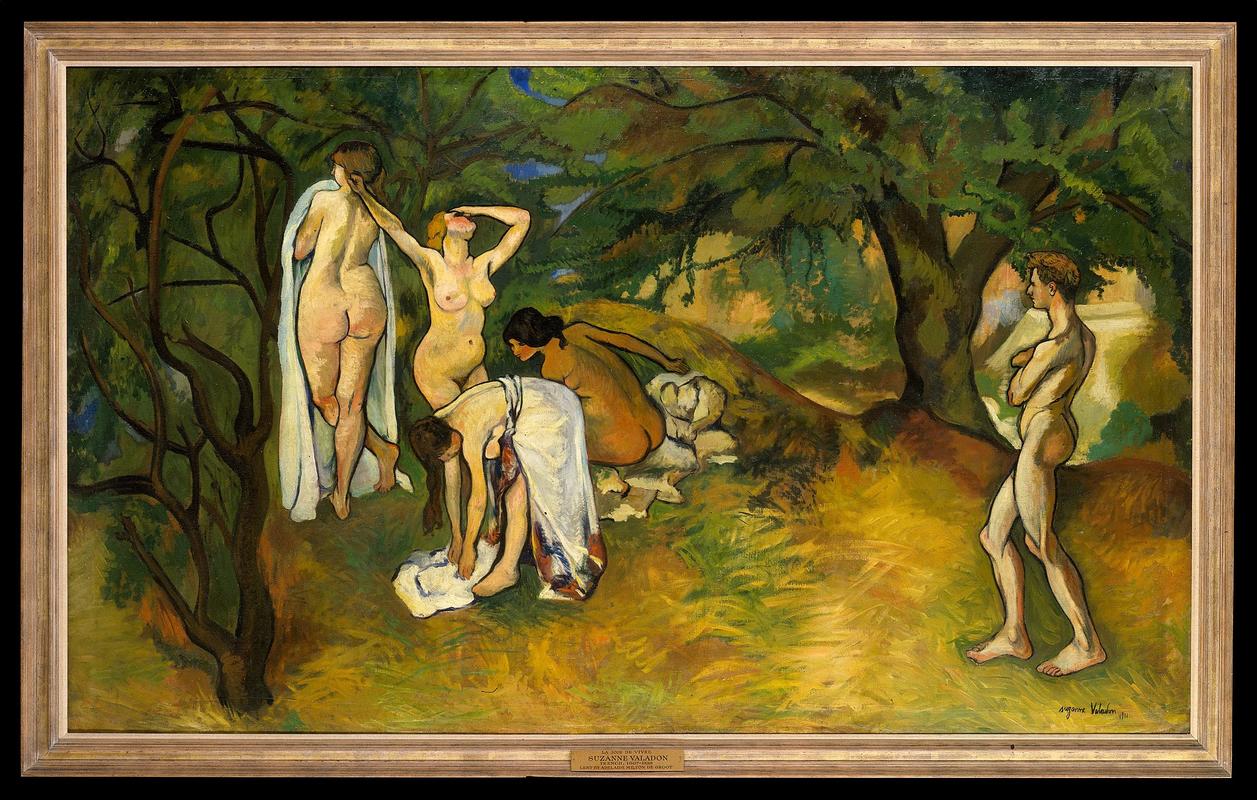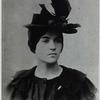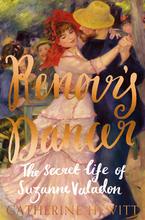More about Joy of Life
- All
- Info
- Shop

Contributor
I was really hoping that the joy of life, as depicted in the painting, The Joy of Life by Suzanne Valadon, was more than just naked women being gawked at.
Granted, the societal constructs of 1911 were a little different than those in 2018, but was I wrong to expect that as a woman there is more to life than just being a plaything of the patriarchy? Then again, maybe this piece is a protest of the male gaze. During this time it was thing to put naked ladies in scenes of nature as a convenient way for men to look at women. As art historian Patricia Townley Matthews writes, “Male Symbolists used this trope to express various desires and fears about women or the forces of nature, but Valadon’s image is much less conceptually directed and consequently more contradictory.” Usually naked women would be depicted without a man to creep on them, because real life men observing the painting would fill that position. Generally, painting was done by men for men and as such was dominated by the male gaze. So, by including a man in the actual painting, especially a naked one, Valadon confuses the sexualization of the women and directs the narrative away from purely lust.
Another interpretation is that this is some kind of modern rendition of the Greek myth of the Judgement of Paris. "Paris," who was modeled after Valadon’s new lover, who BTW was the same age as, and a friend of, her son (lol), stands away from the women, staring as if he were judging them. The Judgement of Paris is an entire story essentially dedicated to the glory of the male gaze. So in this interpretation, does Valadon mean to say that The Joy of Life is male approval? It’s hard to believe that Suzanne Valadon, the eccentric bohemian, would buy into something so fundamentally sexist, and as such we reject this interpretation. Ideally this piece would pose the question: Why can’t people just hang out naked and not have everything in this world revolve around sex? But you can’t always get what you want, especially if you’re a woman in the beginning of the 20th century.
Sources
- "Joy Of Life." Metmuseum.org. N.p., 2018. Web. 24 Sept. 2018. https://www.metmuseum.org/art/collection/search/489551
- Mathews, Patricia. Passionate Discontent: Creativity, Gender, And French Symbolist Art. Chicago: University of Chicago Press, 1999. Web. 24 Sept. 2018. https://books.google.com/books?id=zUe_iyI2EfUC&lpg=PA199&dq=%22joy%20of…
- Tsaneva, Maria. "Suzanne Valadon: 90 Masterpieces." Google Books. N.p., 2014. Web. 24 Sept. 2018. https://books.google.com/books?id=dBhVCAAAQBAJ&lpg=PT3&dq=suzanne%20val…
Featured Content
Here is what Wikipedia says about Joy of Life (Valadon)
Joy of Life (La Joie de vivre) is an oil painting by Suzanne Valadon, completed in 1911. It was bequeathed to the Metropolitan Museum of Art, in New York, in 1967.
Check out the full Wikipedia article about Joy of Life (Valadon)













